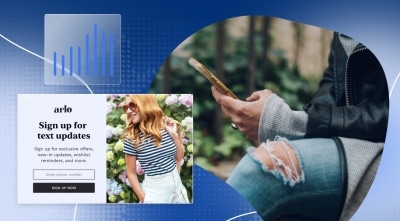Data & AI
Profitable Personalization: Boosting Audience Engagement with Zero‑ and First‑Party Data
January 31, 2022

This byline was originally posted on MarketingDive.com
As third-party cookies crumble, privacy mechanisms evolve and the battle for audiences intensifies, publishers must find new ways to connect with their audiences, monetize that connection, and build compelling experiences. Zero- and first-party data make that possible, laying the foundation for profitable reader relationships.
Why bother with any of this? Put simply, today’s consumers demand it, McKinsey reported. In the age of Amazon and Netflix, the research firm found that 71% of consumers expect personalized experiences and that 76% get frustrated when it doesn’t happen. “If consumers don’t like the experience they receive, it’s easier than ever for them to choose something different,” according to the report.
Exploring what’s possible
First, it helps to clarify zero- and first-party data. Zero party data refers to personal information readers intentionally share with your organization. The best way to capture it is to ask for that information in exchange for something of value: a discount code, exclusive access, or personalized recommendations, for example. First party data refers to data you can capture from cookies and other metrics on your website, such as user behaviors and referral source.
As with your real-life relationships, the more you know each reader, the better you can deliver winsome interactions aligned with their interests and known triggers. When executed well, meaningful personalization is nothing short of a gold mine, enabling a true value exchange: According to a recent Google report, marketers who integrate first-party data across channels see a 150% boost in cost savings and nearly 300% revenue growth.
Though retailers have long practiced these concepts, these one-to-one personalized relationships still feel foreign to many publishers. Allison Mezzafonte, a former media executive and now media industry advisor to Marigold Engage by Sailthru, described the challenges she’s heard from publishers: How do you collect data? Where do you store it? What do you do with it? What do I need, and who can help? “Meanwhile, there’s a ticking clock in the background. For publishers, it’s a matter of survival,” Mezzafonte noted.
What data can be collected?
Most publishers aren’t prompting readers to share personal details, though Mezzafonte pointed out a few exceptions. BabyCenter, for instance. The parenting portal asks website visitors if they’re expecting, trying to conceive, their baby’s due date and more, which users are happy to answer in exchange for guidance tailored to their goals. What BabyCenter is doing — and what all publishers should do — is building a customer profile with data they’d never get out of Google analytics or by tracking visitors to their website.
Apple’s iOS15 release triggered a gradual rollout of Mail Privacy Protection, leaving open rates — a once trusted engagement metric — pretty much entirely unreliable. Email-first brands like The Morning Brew were faced with the challenge of signaling email engagement to maintain list health. They recently shared with us how they are enticing readers to click in email to signal that there is an engaged consumer willingly in receipt of their emails. The message was simple, but clever. It read something like, ‘Want to keep receiving the Morning Brew? Click if there’s a human on the other end of this email. If you don’t click by next month, you’ll stop receiving this newsletter.’ While that’s not explicitly a data exchange, it identified engaged subscribers, and it worked.” Mezzafonte recalled.
ProPublica, another Sailthru customer, hosts a wide range of events on various topics. When readers sign up for an event, they’re added to a lifecycle optimizer flow, which starts building a profile around that reader based on events they attended. “It’s a way to build a user profile without expressly asking them to provide data about themselves,” Mezzafonte said. “It might include if they are Spanish speaking, attend virtual or in-person events, and how many they’ve attended. It ultimately makes for a better experience for their readers.”
According to Gartner, perceived intent in personalization falls into two categories: recognition and help. Recognition includes information that identifies who the reader is, what they’ve done, what’s important to them. The help category is focused on making things easy, alleviating anxiety, teaching users something new, rewarding, or guiding users to a solution. Though both categories can enhance audience engagement, researchers found that help beats recognition.
To grow help-based personalization, identify meaningful ways to help readers. One option is to assess the consumer journey for high-value moments where your brand can help readers overcome a friction point. Another option is to identify empathy points. These are moments that have a disproportionate effect on audience perceptions, Gartner explained.
Because so few publishers focus on personalized help, this is a massive opportunity for early movers to fill the gap and outperform competitors.
How willing are readers to share their personal info?
Emerging studies share a consistent finding: Consumers are comfortable sharing personal information with a brand if it benefits their experience. Contrary to popular assumptions, 73% of surveyed consumers said a business had never communicated with them online in a way that felt too personalized or invasive, leaving the door open to more experimentation around personalization, Accenture reported.
This finding tracks with McKinsey data: 76% of consumers said that receiving personalized communications was a key factor in prompting their consideration of a brand, and 78% said such content made them more likely to repurchase.
To balance personalization with privacy, Accenture analysts advise organizations to let users take the wheel, enabling them to self-profile and decide how they want the brand to know them. “Customers are the data locker. They’ll unlock if they know the exchange is valuable,” according to the report. “If you give them a compelling reason why they should be sharing their data with you, they are more likely to do so.”
Next steps and quick wins
You don’t need a hefty investment or technology overhaul to begin personalizing your readers’ experiences. Mezzafonte recommends leaning into whatever data or tools are available to you today. “You’re essentially building out a profile around each individual. The more you know and the more you can tailor interactions, the more they engage.”
Just as valuable, test your messaging components. “Test headlines, subject lines. There are plenty of A/B testing tools out there, and it’s likely something you already have access to,” Mezzafonte shared. As McKinsey sees it, failure to apply A/B testing is a missed opportunity: “We’ve found that personalized A/B testing elements, such as email tone and language, timing of sending and imagery, can increase conversion and click-through rates by 15% to 30%.”
Lastly, Mezzafonte recommends leaning into technology partners to help you identify solutions. When you’re ready to add new capabilities, seek out reputable providers who are intimately familiar with your industry and who have helped your peers solve similar challenges.
As you progress toward greater personalization, shoot for “magical” experiences, Accenture concludes: Use the data you collect to create experiences your competitors can’t replicate.
The State of Brand Loyalty in the U.S. in 2023
Related



